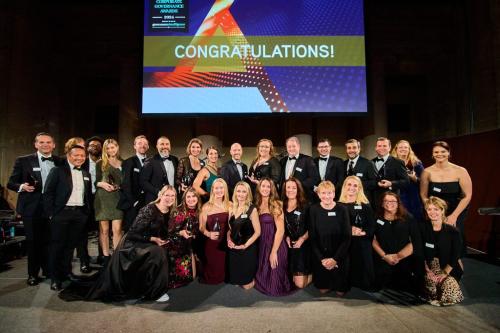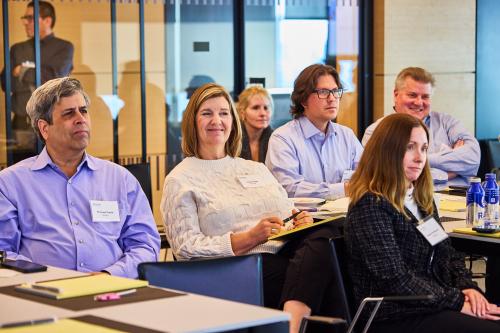More underwriter requests for face-to-face meetings with top executives.
The insurance industry has undergone significant change over the last 10 years, and directors and officers (D&O) insurance is among the areas most affected. D&O policies are designed to cover directors and officers for negligence of omission and commission, and new risks and regulations are changing the way the insurance should be used by some companies.
Ever since the officers of Enron were indicted and jailed for fraud and fabricating records (among other charges), insurance underwriting standards have become steadily more stringent. The 2008 credit crisis changed the underwriting standards for most financial institutions; standards were tightened again amid a string of failed institutions including Fannie Mae and AIG; and standards were adjusted yet again in the wake of the Bernie Madoff scandal and the many smaller ponzi schemes that followed.
 ‘Madoff implicated a lot of entities – not-for-profits, banking institutions, brokerages,’ says Jack Flug, pictured left, who works for Marsh Inc (financial and professional liabilities) practice. As a result, underwriters found they had to do individualized assessments for each company, expanding the areas of inquiry for companies in high-risk industries and broadening the questions companies with global operations should answer.
‘Madoff implicated a lot of entities – not-for-profits, banking institutions, brokerages,’ says Jack Flug, pictured left, who works for Marsh Inc (financial and professional liabilities) practice. As a result, underwriters found they had to do individualized assessments for each company, expanding the areas of inquiry for companies in high-risk industries and broadening the questions companies with global operations should answer.
‘The research underwriters are doing now is much more probing than it has been historically, and that is an outgrowth of all the issues that have occurred on a global basis in the business world over the last several years, culminating in what we saw recently with the demise of MF Global,’ says Flug.
More personalized attention
Updated disclosure laws mean underwriters are focusing more attention on the higher volume of information made publicly available. They are also acting more like analysts – requesting more face-to-face meetings with the management of companies. They are doing anything that will give them an edge in determining risk and rooting out misconduct. ‘When you sit across from the senior individuals at a firm, you get an opportunity to ask more pointed questions,’ explains Flug. ‘You get a chance to see reactions.’
One way to lessen the risk of D&O liability is to select better directors. Companies have become very diligent about making sure directors are prepared to contribute to enhancing shareholder value and mitigating risk because underwriters are going to take the skills level of board members into account when assessing a company. The caliber of directors has also improved because of the rise of shareholder activism, which has increased the scrutiny directors are subjected to.
‘Directors need to be well tuned in to the business of the company whose boards they sit on, they need to be financially savvy and they need to understand the impact of both domestic and global – how the growth of a company overseas may affect them and how issues like enforcement of the Foreign Corrupt Practices Act are hurting companies from an expense standpoint,’ Flug says.
He also emphasizes that board members need to be able to understand how compliance systems work as a means of lowering company liabilities. ‘When you look at regulatory issues that are coming up both here and abroad, the compliance aspect becomes critical,’ he notes.
Generally, candidates for board positions are aware of the higher scrutiny they are now subjected to, and they are less likely to pursue a board seat for prestige or money. In fact, they are more likely to conduct due diligence on a company offering them a board seat to ensure the company doesn’t have a smoking gun that might make them financially liable or place their reputation at risk.
‘Well-to-do people who sit on boards recognize that they’ve worked pretty hard to put the wealth aside,’ says Flug. ‘I don’t think they are willing to jump onto boards and put all of that at risk unless they’ve done their homework.’
Policy choices are evolving
As risks to companies have multiplied, firms have adjusted the standard coverage of the past. Flug says companies should have some non-indemnifiable D&O cover on top of the traditional coverage. That way, ‘in the event the company falls on hard times, the directors and officers will at least have monies sequestered through the non-indemnifiable cover, if the company can’t indemnify them,’ he adds.
Today, companies are also recognizing that they can’t buy cookie-cutter approaches to their insurance needs. ‘There needs to be more homework done when it comes to the international aspects or with regard to the regulatory aspects because traditional policies have limited, if any, coverage for some of that,’ Flug says. ‘If a company is engaging in activity abroad or is engaged in an industry that has more regulatory scrutiny than some others, it needs to make sure to bolster its cover, because that’s where unfortunate issues may arise.’
Lastly, companies realize risk is often unpredictable, so boards have been more willing to buy more cover. Flug says he has known companies buy more cover than what has historically been purchased because the regulatory environment changes so rapidly and directors don’t want to put their personal wealth at risk. Even as companies take this precautionary step, however, Flug laments: ‘The reality is, until you have a claim, you won’t know [whether you’ve bought enough cover].’
D&O insurance rates to flatten in 2012
‒ D&O liability rates were generally flat to down 5 percent for most companies in the fourth quarter of 2011. Larger companies were able to secure rate decreases of as much as 10 percent. But the market is expected to firm modestly in 2012 as a lack of profitability may pressure insurers to seek flat renewals or small increases. Litigation risk related to Dodd-Frank, the Foreign Corrupt Practices Act and M&A activity remains high.
‒ Rates for errors and omissions insurance were typically down 5 percent to up 5 percent in the fourth quarter. Although it is still possible to obtain reductions, rates are generally expected to be flat to slightly up in 2012. Recent court decisions point to more significant privacy and cyber exposures, such as data breaches and hacking incidents, for many US companies.
Source: ‘Navigating the risk and insurance landscape: US insurance market report 2012’, Marsh & McLennan








